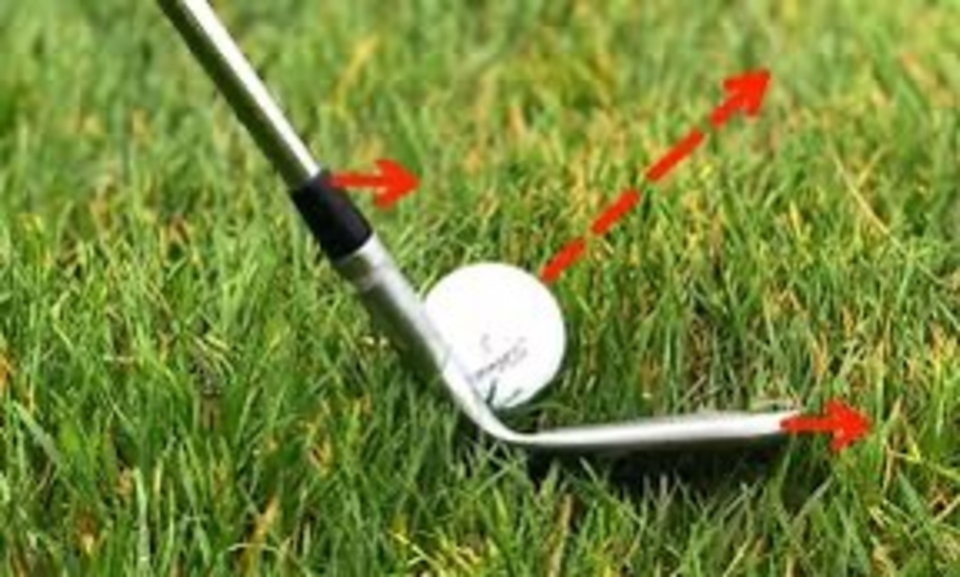Discover the truth behind the shank shot and learn how to correct this common mistake in golf.

Introduction
The dreaded shank shot has haunted golfers of all levels, leading to frustration and confusion on the course. Many believe the shank is caused by a faulty swing path or an improperly aligned clubface, but the truth is far simpler. In this article, we'll debunk the myths surrounding the shank and explain its actual cause, offering practical tips to help you overcome this issue and improve your game.
Debunking the Myths
Contrary to popular belief, the shank is not a result of an incorrect swing path or a misaligned clubface. The primary cause of a shank is a simple and manageable issue of hands being closer to the ball at impact than they were at the address. This slight shift can cause the ball to strike the club's hosel, resulting in the dreaded shank shot. Understanding this straightforward cause should reassure you that it's a correctable problem.
Understanding the Real Cause
To correct a shank, it's essential to maintain the correct distance between your hands and the ball throughout your swing. Ensuring your hands return to the same position at impact as they were at address will prevent the ball from contacting the hosel and produce cleaner, more accurate shots.
Differential Practice: A Powerful Tool
Differential practice, which involves intentionally varying your swing to understand and correct faults, can be incredibly effective for fixing a shank. This should give you hope and motivation, knowing that there's a proven method to help you learn to maintain proper hand and club positions.
Intentional Mis-hits Drill
Set Up for Variability: Draw a line down the heel, third of your clubface and a dot on the ball. This visual aid helps you focus on the impact location.
Intentional Heel and Toe Hits: Practice hitting ten shots intentionally off the toe and then ten shots off the heel. This will help you understand the different impacts and train your muscle memory to avoid the hosel.
Score Your Success: Award yourself a point for each shot that strikes the grooved area of the face toe-side of the line. If you struggle to get any points, start with smaller swings like chipping or pitching and gradually increase speed as you improve.
Refine Your Technique: Use a second ball placed on the toe of your clubface, creating just enough room to hit the target ball cleanly. This constraint forces you to strike the ball in the desired area, enhancing your control and precision.
For more detailed information on differential practice, check out Adam Young's article on differential practice (Adam Young Golf) (Practical Golf Forum) (Adam Young Golf).
Practical Tips to Fix a Shank
Check Your Setup: Make sure you are setting up with the proper distance between your hands and the ball. Use a mirror or ask a coach to verify your positioning.
Swing Drills: Practice drills that emphasize keeping your hands at the same distance from the ball throughout your swing. One effective drill is placing a headcover outside the ball to encourage a more consistent hand path.
Consistent practice, mainly focusing on hand positioning, is critical to ingraining the correct mechanics and reducing the likelihood of a shank. This should inspire a sense of commitment and dedication to your game, knowing that regular practice can lead to significant improvements.
Review of Past Articles
Our previous articles on BrynParryGolf.com covered various aspects of improving your golf game, from perfecting your swing to enhancing your mental approach. Our consistent focus has been on providing actionable advice and practical tips to help golfers of all levels achieve their best performance. This article on correcting the shank is another step in our commitment to helping you enjoy a more successful and enjoyable golf experience.
Call to Action
Book an online lesson with me using the Skillest app for personalized coaching and further assistance. Stay updated with the latest tips and insights by following me on my social media platforms:
Conclusion
Understanding the actual cause of the shank shot and implementing these practical tips will help you overcome this common issue and improve your overall game. Consistent practice and proper hand positioning are crucial to avoiding the shank and achieving cleaner, more accurate shots.
The shank is caused by hands being closer to the ball at impact than at address.
Maintaining correct hand positioning throughout the swing is crucial to avoiding a shank.
Regular practice and focused drills can help correct the shank and improve your golf game.